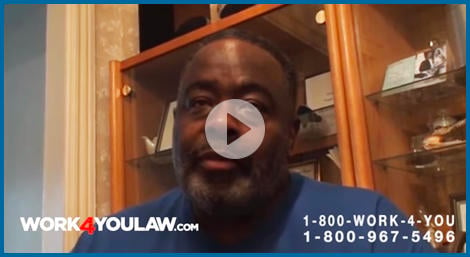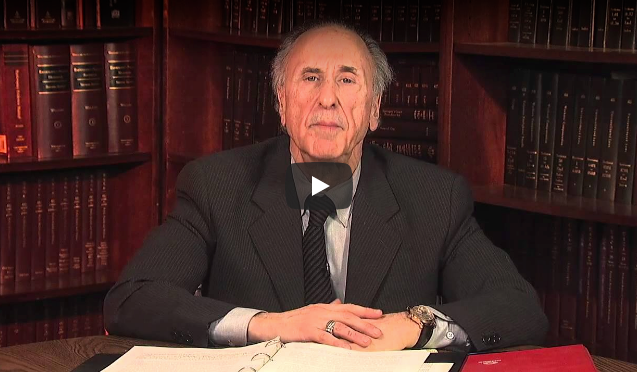Dangerous Floors: Being Aware of Slip, Trip-and-fall Hazards
Floors that are unclean or that have liquid spills and other contaminants on them are unsafe and result in numerous slip-and-fall or trip-and-fall accidents across the nation. These types of injury accidents tend to occur in places where there is a lot of foot traffic, such as restaurants, supermarkets, stores and businesses. Slip-and-fall or trip-and-fall accidents involving dangerous flooring and surface conditions can result in serious injuries and losses to the victims. Some of these injuries may even result in disfigurement or permanent disabilities. If you or a loved one has been seriously injured due to a dangerous or defective floor, it is important that you understand your legal rights and options.
When we walk on any surface, regardless of whether it is a part of a private or public property, we have a few basic expectations. We expect the flooring surface to be appropriate for its intended use. We expect that it was properly installed and that it is being maintained in such a way that it is free from dangerous conditions. The general public should expect a safe floor in the environments they visit during the course of their everyday lives. According to a 2012 report from the National Safety Council, falls in the workplace alone account for $13.4 billion in workers’ compensation claims. This number does not include trips, slips and falls which occur in other locations from private homes to grocery stores, restaurants, sidewalks and parking lots.
Trip-and-Fall Accidents

A trip-and-fall accident may also occur when there is a surface defect on a floor or walkway. For example, a hole in the floor or on a walkway may cause a person to lose his or her balance and trip and fall. A trip may also occur at the point of transition between two separate walkway surface materials such as carpet and tile. Generally speaking, to prevent such incidents, a walkway should be flat and provide support of the foot as people walk. The transition from a flat plane to one that is sloped should be gentle in order to avoid stumbles. A walkway should be free of defects such as cracks and holes. It should also be free of obstacles such as bumps.
Slip-and-Fall Accidents
A slip refers to the failure or lack of available traction between one’s footwear and the walking surface. This causes the foot to slide. The available traction of a floor surface is often known as its “slip resistance.” A slip occurs when there is a sudden or abrupt change in slip resistance. This may happen when there is a change in surface material, the presence of a spill or a change in the level of the floor.
The risk of slipping is greater in an area where there is a lot of pedestrian traffic such as inside a restaurant or supermarket, especially if the floor is contaminated by spills. Soap, water, soup, dressing, oil, laundry detergent or just about any substance that is on the floor and makes it wet or slick can pose a significant slip-and-fall risk.
Selecting the Type of Flooring
The slip resistance of a flooring surface will depend on its type and composition. In choosing the type of floor for a certain environment, the building owner or managing agent should take into consideration the intended use for the floor and the floor’s slip resistance. For example, a restaurant may have different flooring needs than a high school gymnasium or a supermarket. The location and the activities expected to take place there should provide guidance to property owners and/or property managers when it comes to flooring selection.
Another factor that contributes to slip-and-fall accidents is when floors are lined with a material such as a carpet runner, walk-off mat or a paper floor protector. Property owners and/or property managers should evaluate the type of runner or floor protection being chosen for its safety. They would also be well advised to reconsider the choice of such floor liners in previous installations. Ideally, the lining should provide the same slip resistance and traction as the surface it protects.
Factors That Determine Floor Safety
When determining whether a floor is reasonably safe, there are four factors that should be considered:
Does the flooring material and its characteristics match the intended use of the floor? The property owner and/or property manager is often in the best position to look at the types of activities that take place at the facility and determine what floorings are safe and appropriate. Whether decisions regarding the type of flooring are made by the owner or an architect, designer or contractor, it is important to remember flooring selection is the first and one of the most crucial steps when it comes to ensuring a safe floor.
Is the flooring installed correctly? Once the right type of flooring is selected, it must be installed correctly. The right flooring installed incorrectly is as unsafe as having the wrong flooring. All flooring manufacturers provide written instructions on proper installation. One of the ways to ensure a safe floor is by hiring a certified floor installer who has the necessary knowledge and experience to do the job right.
Is the flooring maintained properly? Is the floor surface kept in an appropriate state of repair for its intended uses? All flooring manufacturers provide written instructions for maintenance and repair of the floor.
Is the floor being managed properly? When the floor is used for unintended purposes, it may be deemed unsafe. Property owners and/or property managers should provide clear and sensible rules and regulations regarding the activities that are permitted in the building/environment. They must manage their facility to permit only those activities for which that particular environment is suited.
Preventing Accidents
There are some areas of a building that may benefit from matting placement to help prevent slip-and-fall accidents:
Entrance zones: These areas include front and rear entrances and peripheral doors that lead to the outdoors. These zones are likely to be more slippery because people who use them may bring in snow or ice from outside.
High-risk zones: This includes transitional walkways such as spaces between the kitchen and front-of-house areas or offices and hallways leading from bathrooms to dining areas.
High-traffic zones: Most hallways and corridors in restaurants are considered to be high-traffic zones and should be protected with mats. Cashier and checkout stations are also susceptible to slip-and-fall accidents.
Productivity zones: Areas where staff members or patrons stand such as work stations, checkout counters or waiting areas should also be matted to prevent devastating falling accidents.
Slip-and-Fall and Trip-and-Fall Injuries
Slip-and-fall and trip-and-fall accidents can result in extremely serious injuries, permanent disabilities or even death. Traumatic brain injuries are a common result of these types of accidents, especially when a fall victim’s head strikes the ground. Victims who suffer brain damage may need lengthy rehabilitation and may struggle with ongoing issues including mobility problems, loss of memory as well as cognitive and behavioral problems.
Another common type of injury that occurs in falling accidents is damage to the spinal cord that results in neck and back issues. When a victim falls, there is the potential for a slipped or herniated disk, broken back or other injury that may cause chronic pain, require surgery and/or leave him or her unable to return to work. Falling accidents also cause broken bone injuries, specifically broken hips. A majority of fall victims are senior citizens. When elderly people fall they are likely to break their pelvis or hip. This may result in the victim requiring hip replacement surgery or prolonged nursing home stays, which significantly reduces his or her quality of life.
Torn tendons and ligaments are another common consequence of falling accidents caused by dangerous floors. Tearing a tendon or ligament in your feet, knees and wrists can be extremely painful and have long-term consequences. Many tears take several months to heal and often require costly physical therapy. Some of these injuries may also require surgery. And even after all the treatment, a patient may never fully recover and regain the mobility he or she used to have.
Responsibility of Property Owners
Property owners and property managers bear a great amount of responsibility in most slip-and-fall or trip-and-fall accidents. Their liability stems from the fact that they exercise control when it comes to selecting, installing and maintaining the flooring on their properties. They have the responsibility and legal obligation to properly maintain the floors including mop up any spills that occur or place warning signs or cones around spills so that visitors, customers or guests are properly made aware of the hazard. They also have a duty to fix defects such as cracks in the flooring, which pose a trip-and-fall hazard.
Property managers or maintenance firms may be held accountable for injuries that are caused by falling accidents. If you have suffered injuries in a slip-and-fall or trip-and-fall accident, it is important that you seek the counsel of an experienced New York City dangerous flooring injury lawyer to ensure that your rights are protected and that the at-fault parties are held accountable
What is Your Claim Worth?
The worth of value of your claim usually depends on the types of injuries, damages and losses you have sustained as a result of the slip-and-fall or trip-and-fall accident. If you have suffered injuries that required you to obtain medical attention, undergo hospitalization and/or surgery as well as take time off work to heal, then your claim will be worth substantially more than if you had suffered no injuries or very minor injuries that didn’t require any medical attention. There are several damages for which you can seek compensation as a victim of a falling accident including, but not limited to, medical expenses, lost wages and benefits, hospitalization, cost of rehabilitative therapy, permanent injuries, disabilities, past and future pain and suffering, etc.
Protecting Your Rights
There are several steps victims of slip-and-fall or trip-and-fall accidents would be well advised to take in the event they are injured. First and foremost, file a report with the property owner and/or property manager. For example, if you slip and fall in in a restaurant, file a report with the restaurant owner or manager. Get a copy of the report for your own records. Take photographs of the spill or the flooring defects that caused your accident as well as your injuries. Get contact information for anyone who might have witnessed your fall. Try to get medical attention and treatment for your injuries.
Save all receipts, invoices and get copies of medical records that pertain to your injury. Do not talk to insurance companies for other parties or rush into a settlement without first discussing your case and possible claim with an experienced New York City dangerous flooring accident attorney. You need an experienced injury lawyer on your side who will fight for your rights and look out for your best interests.
If you or a loved one has been injured in a slip-and-fall or trip-and-fall accident as the result of a dangerous or defective floor, the experienced New York personal injury lawyers at the Law Offices of Kenneth A. Wilhelm can help you better understand your legal rights and options, and also fight hard to recover just compensation for you. Our law firm recovered $1,700,000 for a woman who slipped and fell and received no hospital or medical treatment for one month after the accident.
Please contact us TOLL FREE 24 hours a day, 7 days a week at 1-800-WORK-4-YOU (1-800-967-5496). WE CAN EVEN COME TO YOU. There is no attorneys’ fee unless we recover money for you. We can also help with personal injury cases in New Jersey, Connecticut, Pennsylvania, or Florida. If you have been seriously injured in any of the 50 U.S. states, please call us and we will try to help you with your case.
Other TOLL FREE phone numbers for us are:
1-800-RADIO-LAW, 1-888-WYPADEK, OR 1-800-LAS-LEYES
Please visit us at: www.WORK4YOULAW.com










